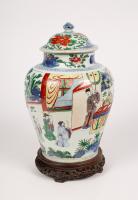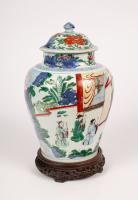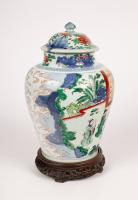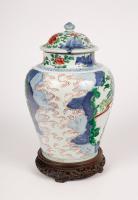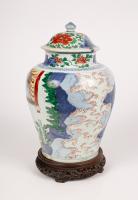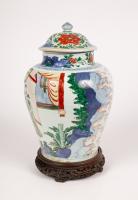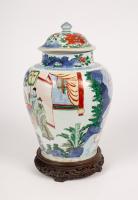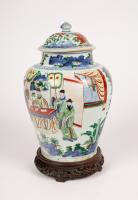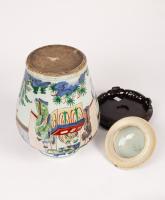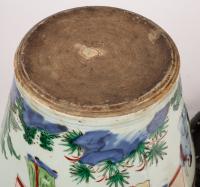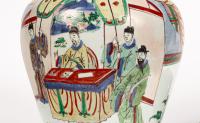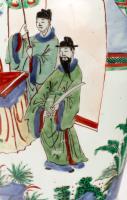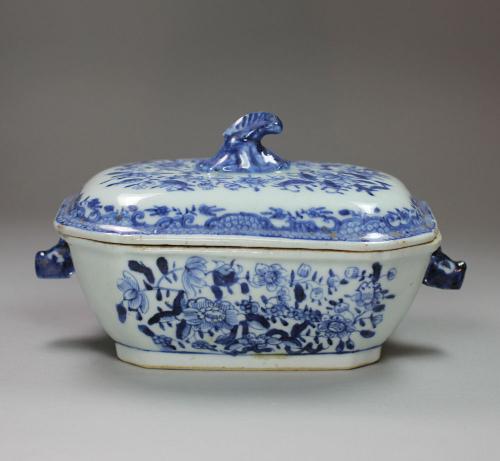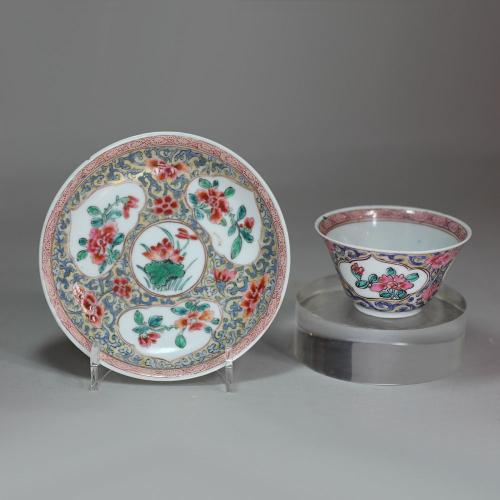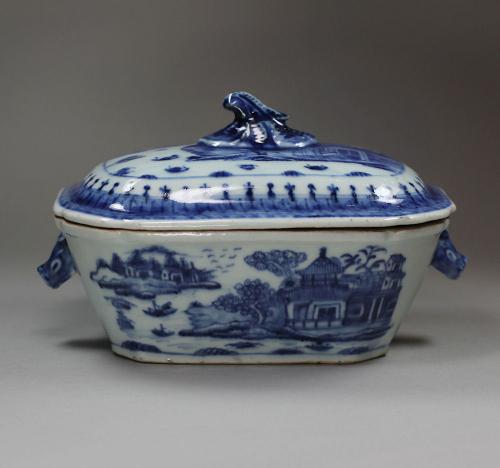
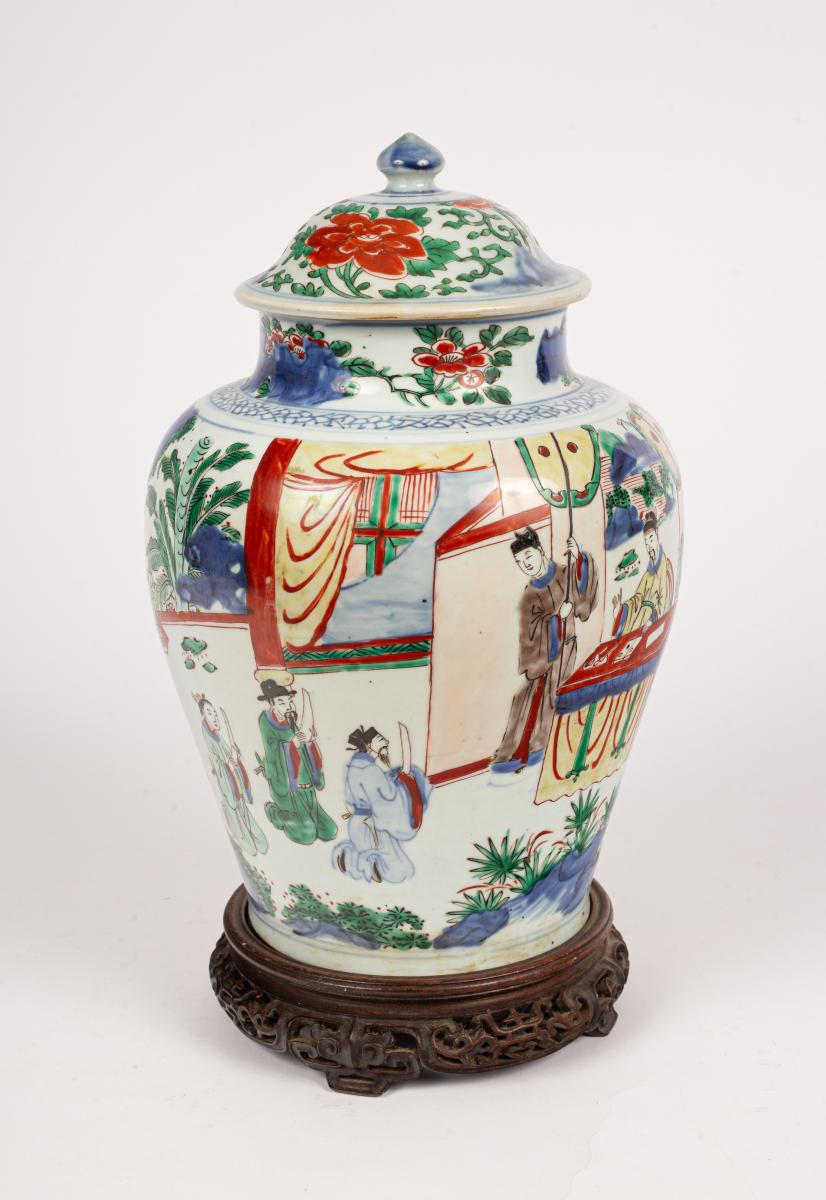
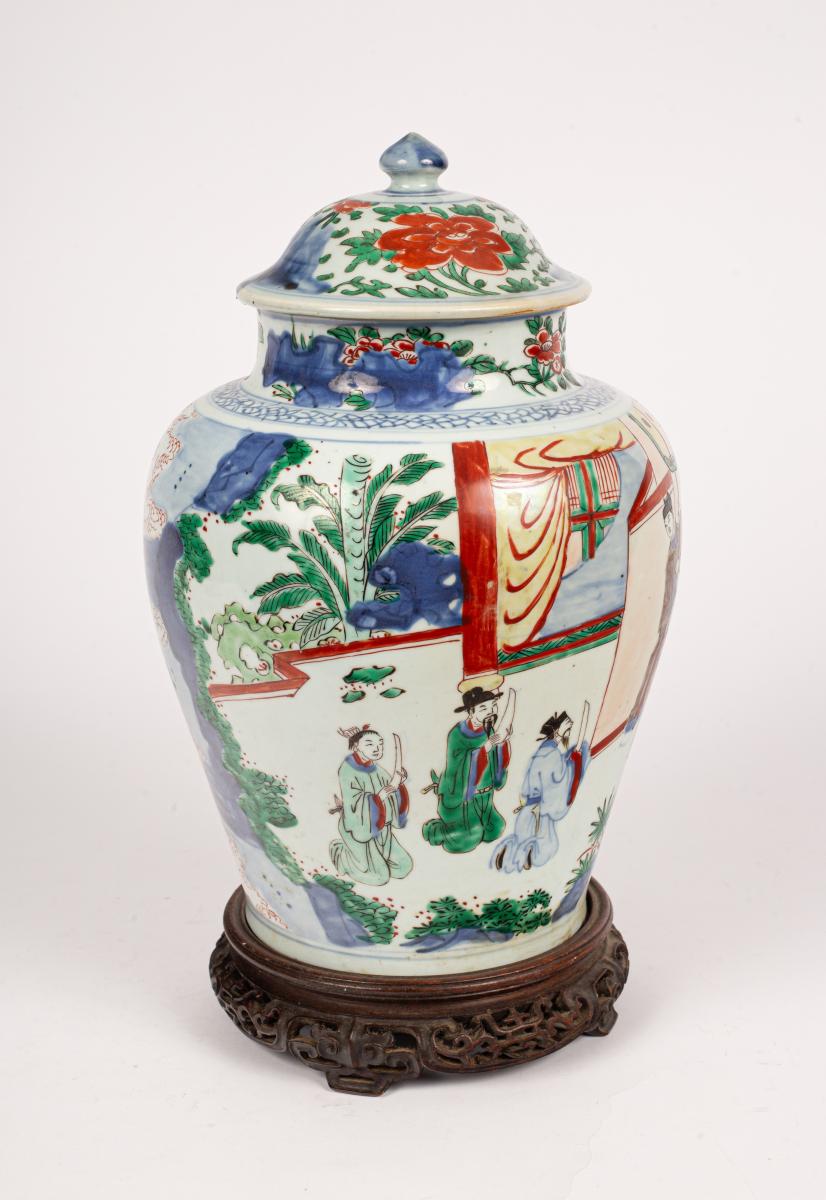
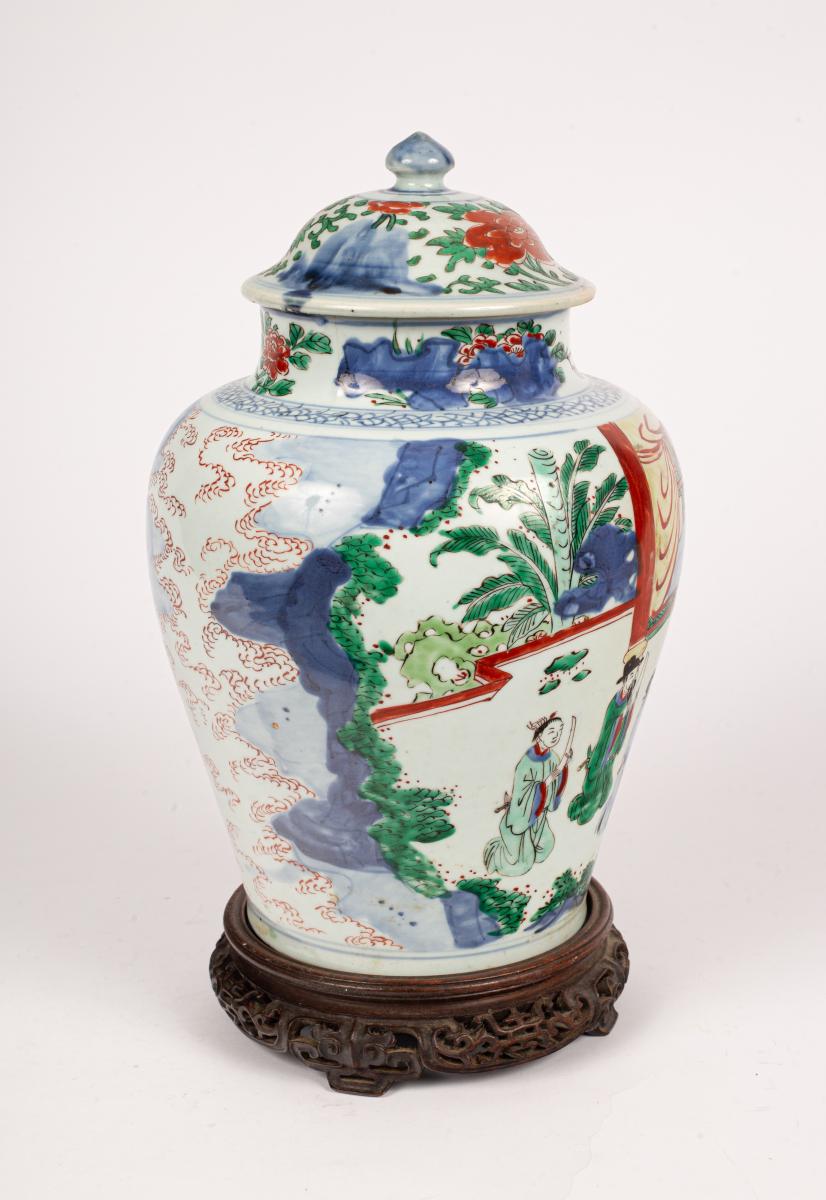
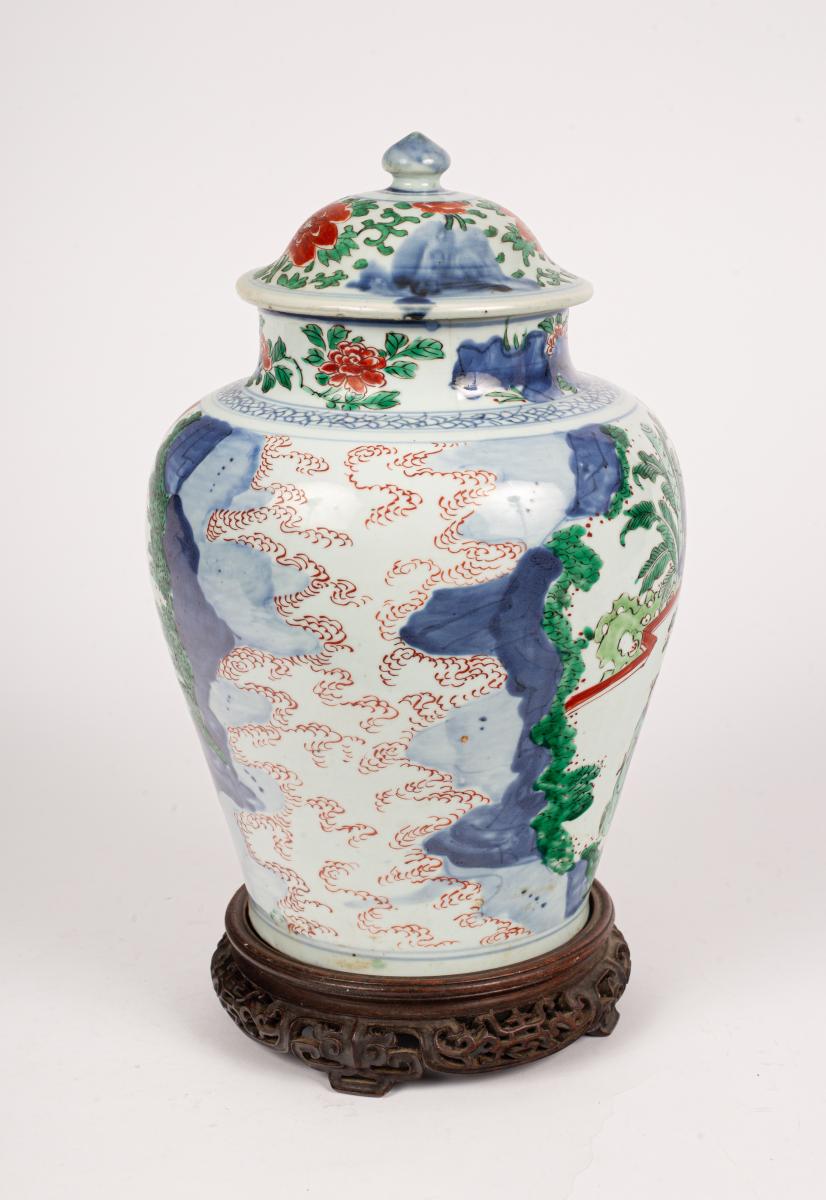
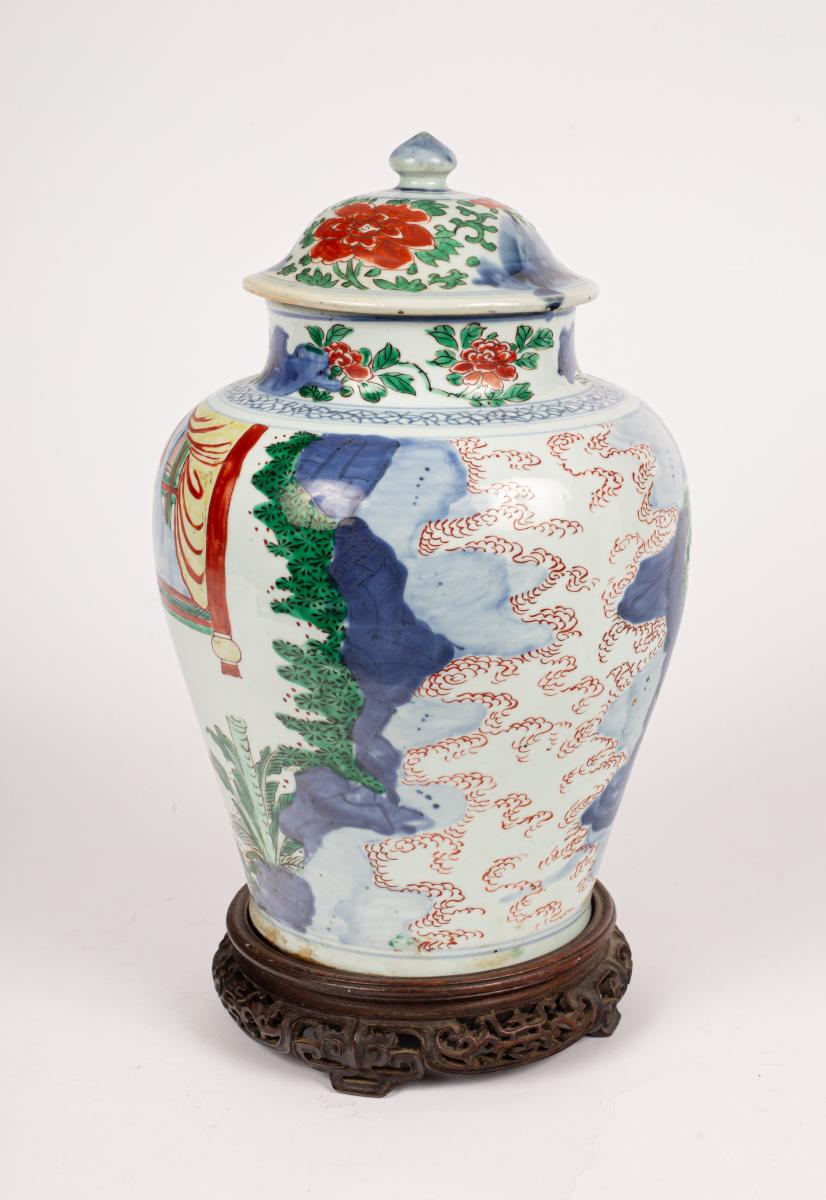
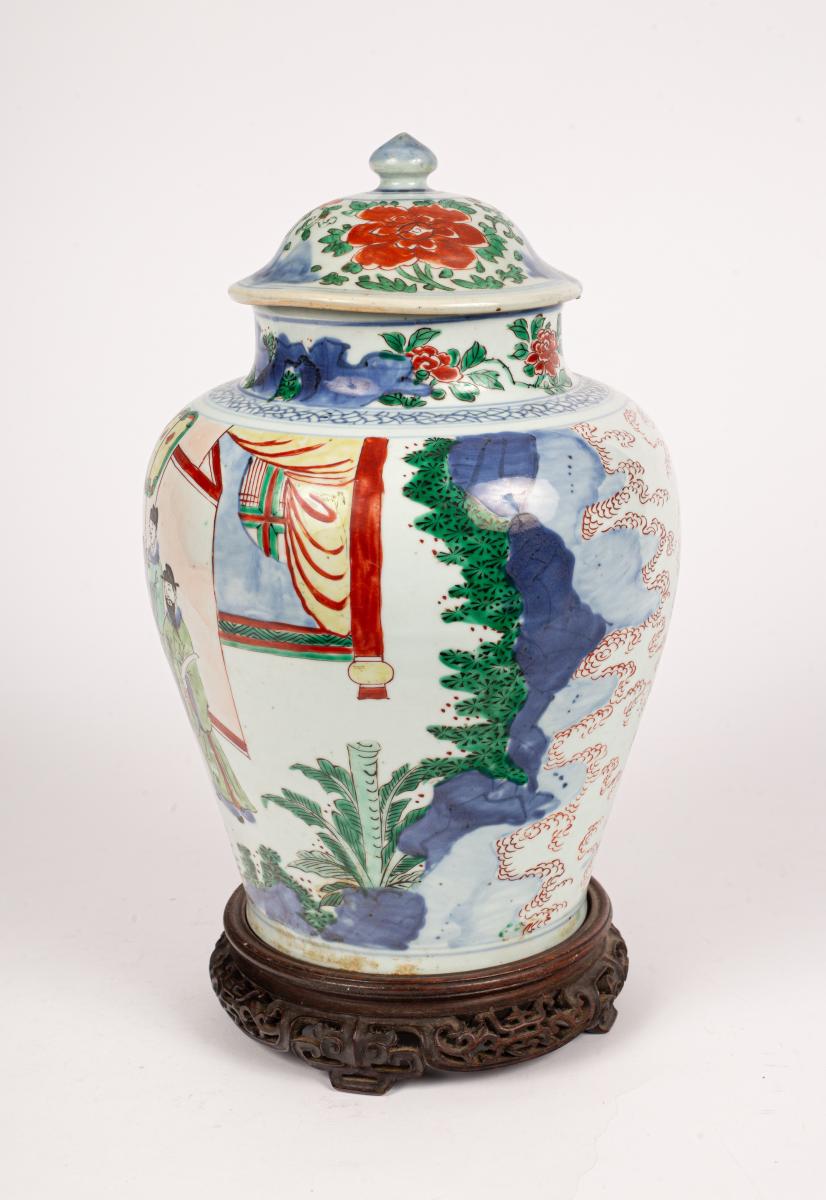
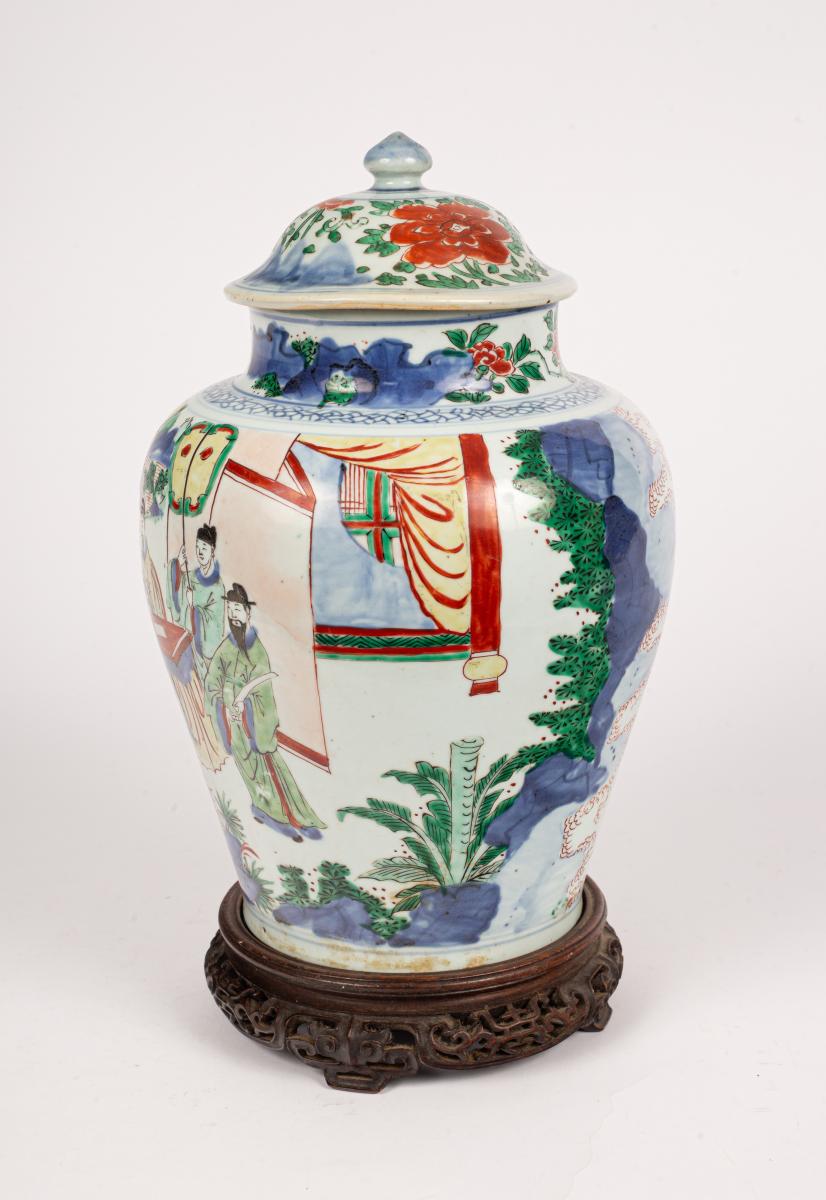
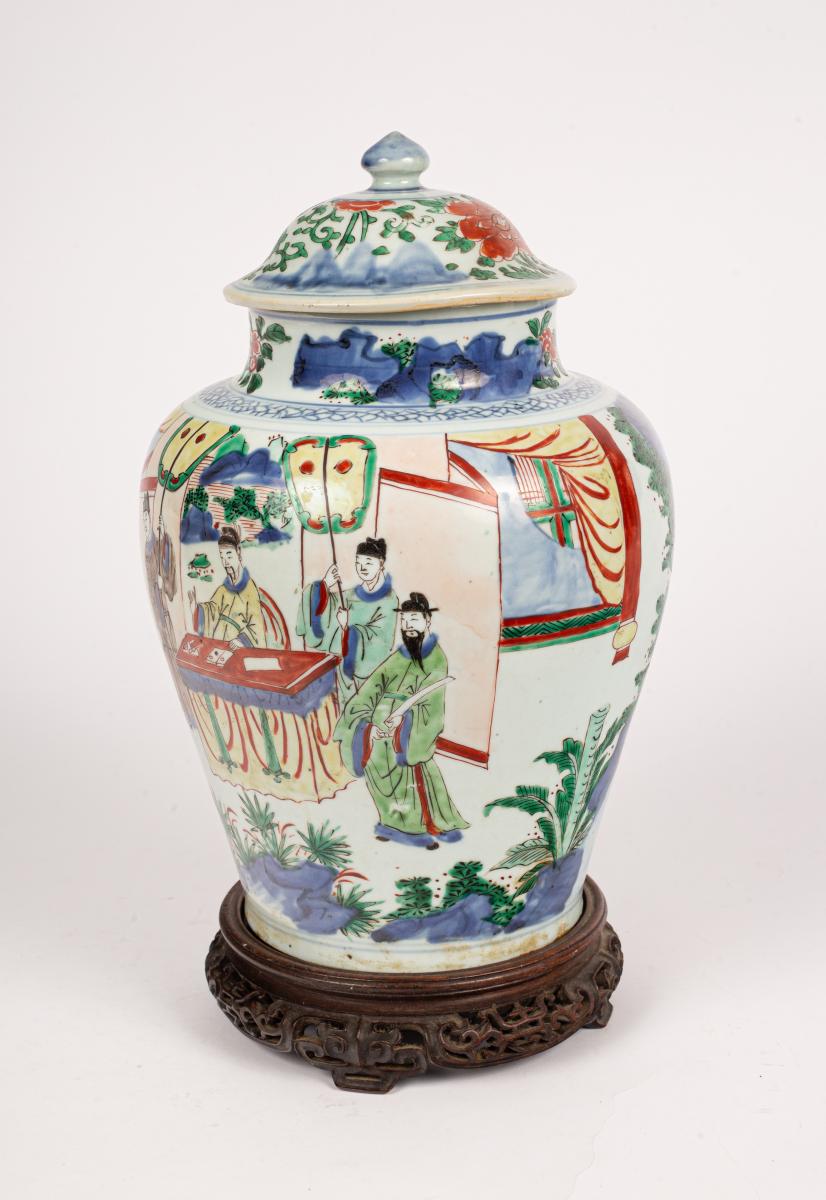
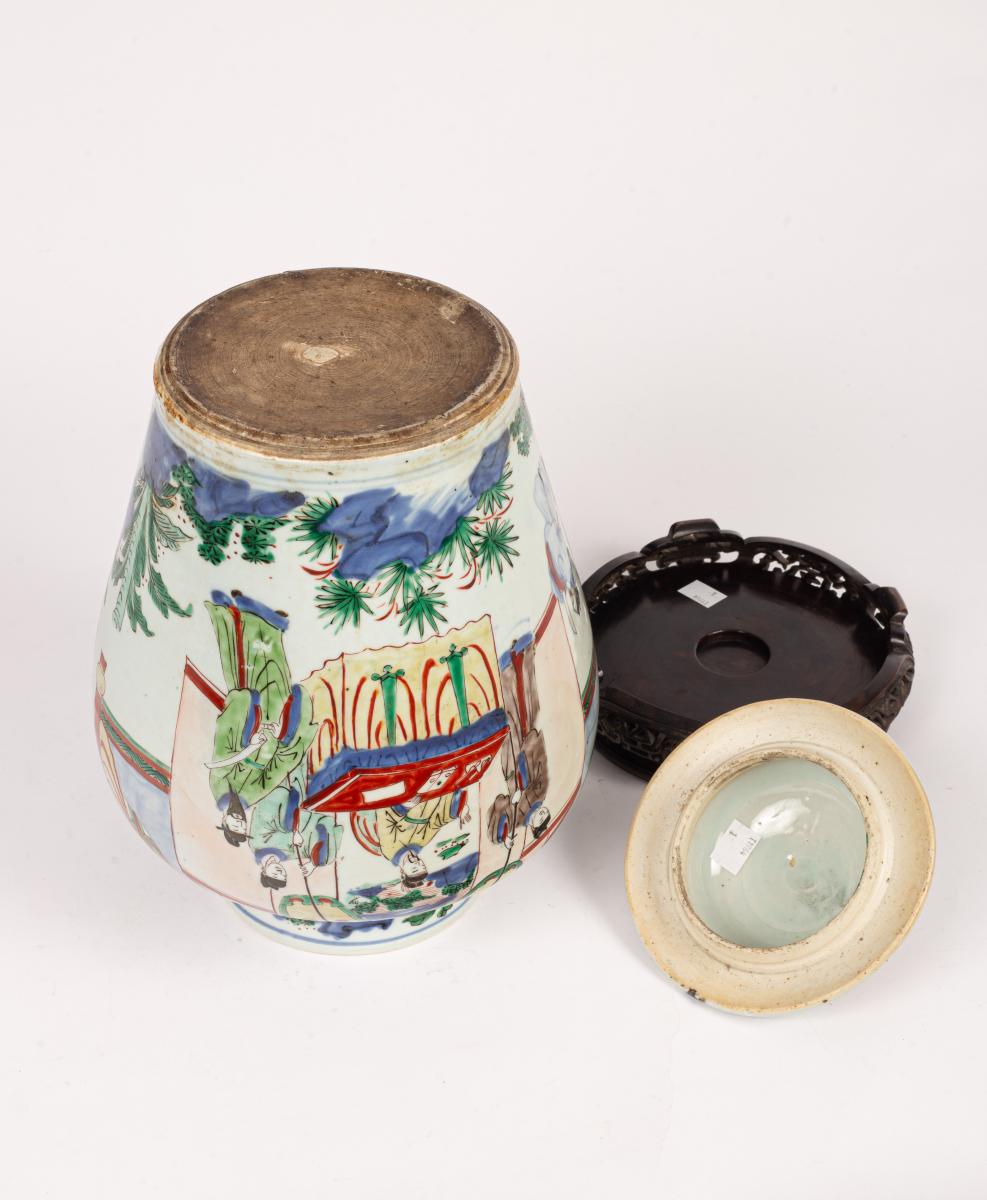
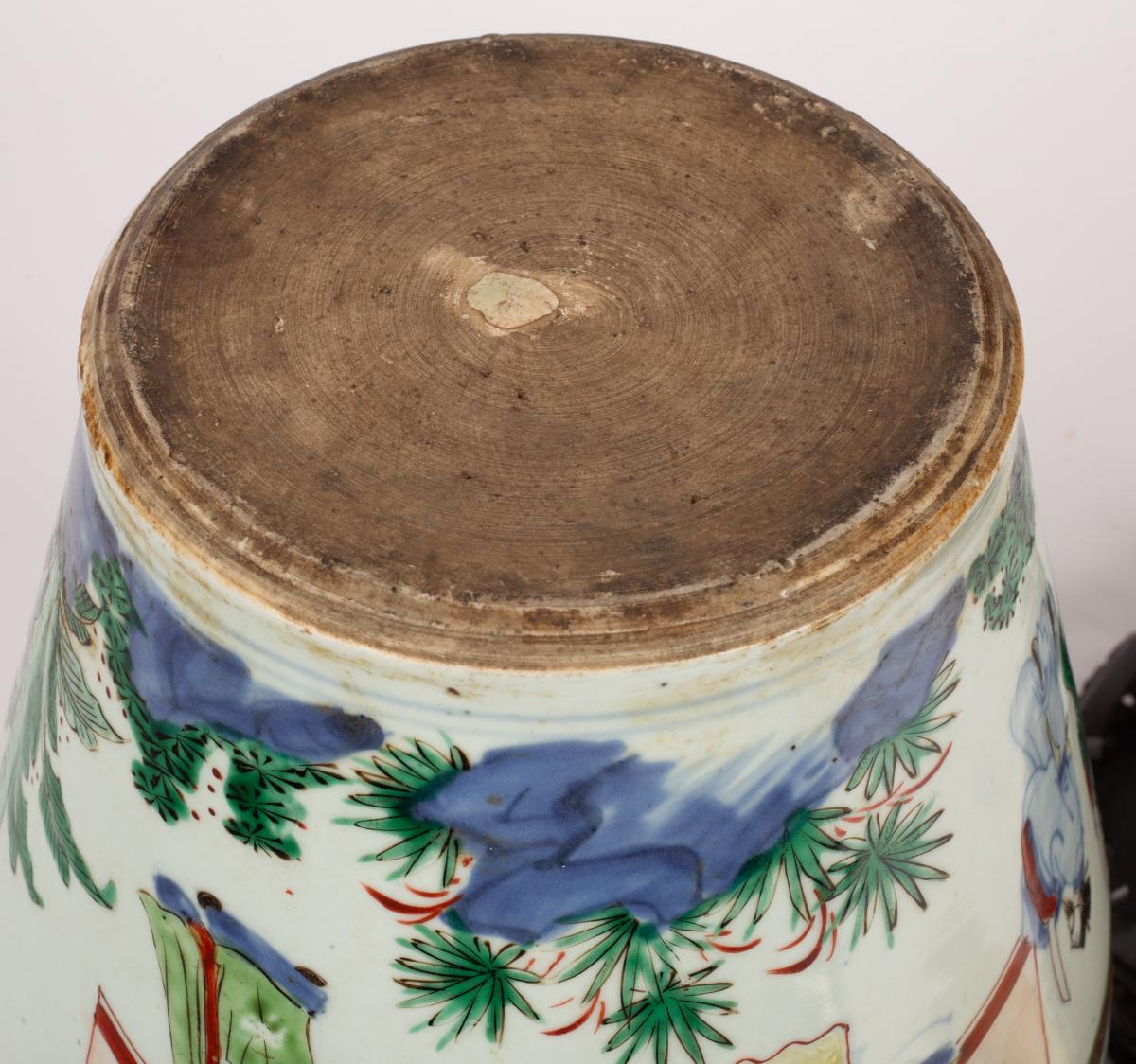
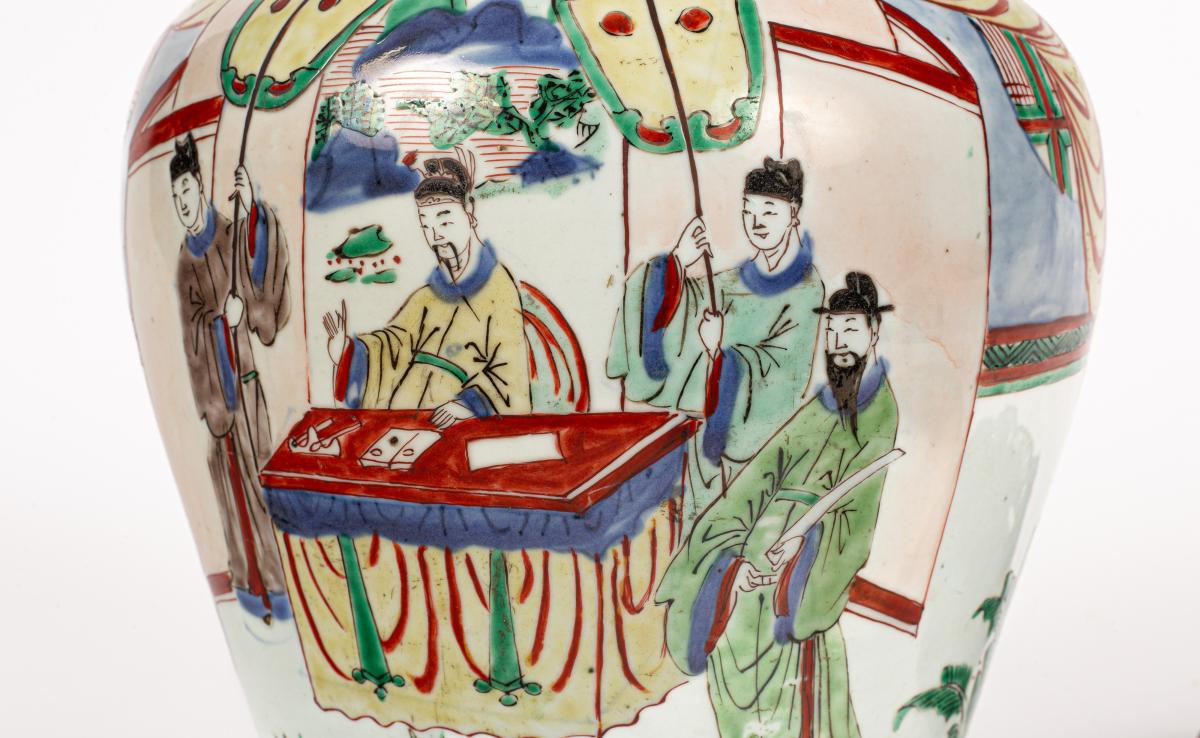
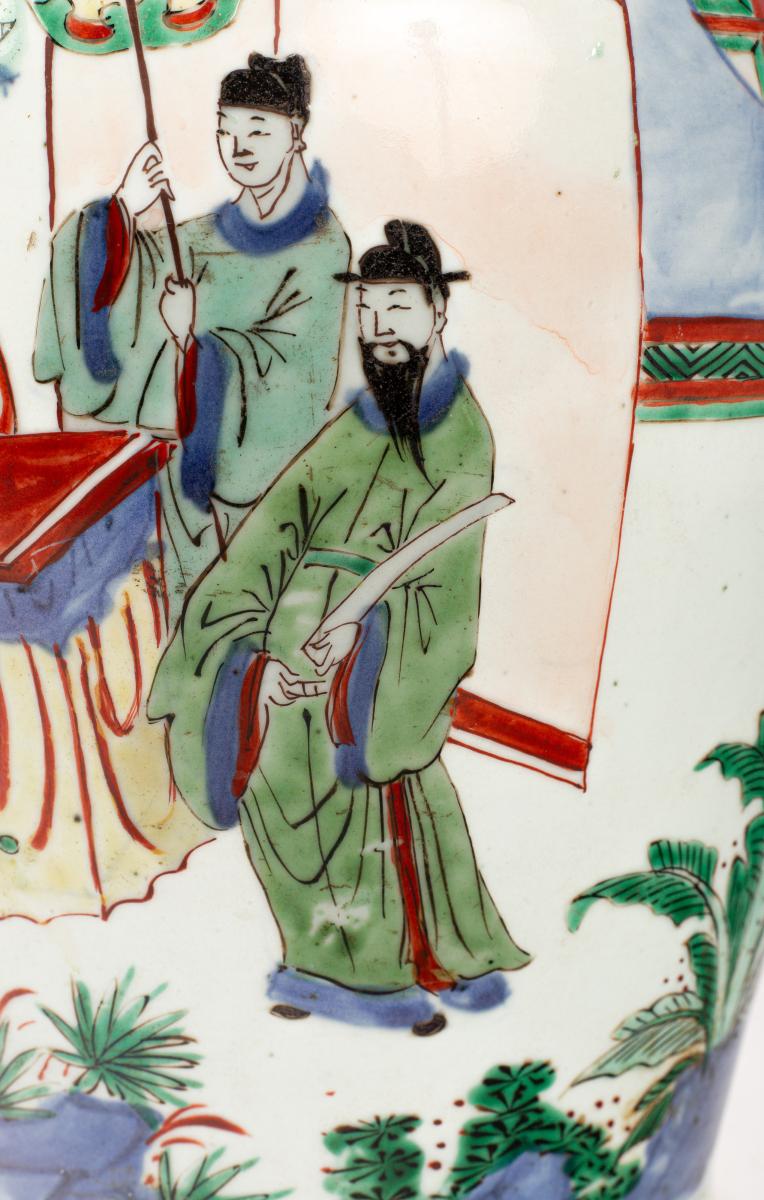
Price on application
This object is eligible for a Certificate of BADA Provenance
The BADA Standard
- Since 1918, BADA has been the leading association for the antiques and fine art trade
- Members are elected for their knowledge, integrity and quality of stock
- Our clients are protected by BADA’s code of conduct
- Our dealers’ membership is reviewed and renewed annually
- Bada.org is a non-profit site: clients deal directly with members and they pay no hidden fees
A wucai baluster jar and cover, Shunzhi period (1644-1661), with wide shoulders and tapering foot, decorated in underglaze cobalt blue and coloured enamels of red, green, turquoise, yellow and black with three men, holding scrolls of paper and kneeling before the Emperor, who is dressed in long yellow robes and seated at a desk in front of a painted landscape screen and two male attendants bearing brightly coloured long-handled fans, a fourth man approaching his desk to offer a further scroll, all in a rocky garden with bamboo, plantain and low shrubs, outside a pavilion with one room visible beyond a slightly raised red and yellow curtain, the body also partly decorated with a cloud pattern in iron-red; the shoulders with a band of cracked ice, the neck with sprays of peony and greenery emerging from further rockwork, the lid with peony heads amongst scrolling foliage and surmounted by a peach-shaped finial.
Dimensions:
Height: 37 cm. (14 9/16in.)
Condition:
Faint 'hair-line' to rim
Notes:
The scene depicted on this vase is from the tenth chapter of the ‘Romance of the Three Kingdoms’ (三國演義), a historical novel attributed to the 14th century writer Luo Guanzhong. In this particular episode of the epic tale, the four rebels, Li Jue, Guo Si, Zhang Ji and Fan Chou, approach the Emperor and each make a demand of him, which he grants in return for the withdrawal of their troops:
‘The Emperor, meanwhile, speaking from the palace tower, issued a statement to those below: “Wang Yun has been executed. On what grounds have you not withdrawn your forces?” Li Jue and Guo Si responded: “Our service to the royal house has not yet been requited by titles from Your Majesty. That is what we are waiting for.” The Emperor said, “Which titles do you want?” Each of the four generals wrote on a piece of paper the offices and fiefs he required and submitted it to the Emperor; having no choice, he made the following awards: Li Jue, appointed general of Chariots and Cavalry and enfeoffed as Lord of Chiyang; also named commandant of the Capital Districts and granted insignia and battle-axe confirming military authority. Guo Si, appointed General of the Rear and Lord of Meiyang and granted insignia and battle-axe; both generals to control court administration Fan Chou, appointed General of the Right and Lord of Wannian. Zhang Ji, appointed Flying Cavalry General and Lord of Pingyan, with his garrison stationed at Hongnong.'
(Romance of the Three Kingdoms, trans. Charles Henry Brewitt-Taylor)
While a work of fiction, the novel includes some historical figures and follows the battles, intrigues and struggles of warring lords during the turbulent hundred year period from the end of the Han dynasty (189-220 AD) to the end of the Three Kingdoms period (220-280 AD). Interestingly, the period during which this particular vase was made was a similarly turbulent chapter of Chinese history, during which political upheaval resulted in lack of imperial patronage of ceramics, forcing the highly skilled potters of Jingdezhen to innovate and look for new markets in order to survive. This in turn resulted in a new range of highly dynamic and varied designs. Furthermore, developments in print technology and the consequent expansion of printed material available meant that histories and romances were incredibly popular during the first half of the seventeenth century, and also provided artists with a wide range of visual sources from which to draw inspiration. The Romance of the Three Kingdoms was one such text that proved exceptionally popular, with scenes and characters becoming iconic and well-known symbols of Chinese history and culture. Potters catered to this renewed interest in classical texts, with wares from this period showcasing skilfully painted scenes from the epic tale. The popularity of the Romance continued into the Qing; testament to the enduring impact of the novel and the artistic impressions which emerged during the transitional period. Initially, early ‘transitional’ porcelain largely used a palette of blues known as ‘violets in milk’ but as enamel technology advanced, designs with bright colours and intricate detail, such as the wucai example here, became increasingly popular.
Dimensions
Height: 37 cm. (14 9/16in.)Condition report
Faint 'hair-line' to rimStock number
W835The BADA Standard
- Since 1918, BADA has been the leading association for the antiques and fine art trade
- Members are elected for their knowledge, integrity and quality of stock
- Our clients are protected by BADA’s code of conduct
- Our dealers’ membership is reviewed and renewed annually
- Bada.org is a non-profit site: clients deal directly with members and they pay no hidden fees


